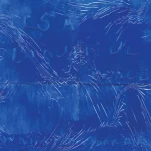Insidious: The Last Key

Any studio looking to kickstart a surefire horror franchise knows to hire Australian genre wunderkind James Wan and let him do pretty much whatever he wants. After popularizing torture porn with the Saw franchise during the early 2000s, Wan is now responsible for getting underway not one, but two PG-13 jump-scare ghost horror franchises: The Conjuring cinematic universe and the Insidious series. As far as the general premises and overall technical moods of these films are concerned, they’re really not that different from one another. In fact, I’d be fairly surprised if a crossover flick doesn’t happen sometime soon. They are both about a team of paranormal experts who help families get rid of evil spirits that have nothing better to do than lure unsuspecting, none-too-bright kids into dark rooms and basements, wait a ridiculously long time hiding in order to raise suspense as if they’re trolling their victims, before popping up to scare the bejeezus out of them before the screen cuts to black.
These demons rinse and repeat this plan in mind-numbingly episodic fashion, until they realize that the movie they’re in is reaching its second act break, which propels them to pull the cutest and most likable kid into the spirit world, forcing the experts to go into an afterlife that curiously look like a generic Halloween haunted house tour in order to save the poor rascal. At this point, after a significant number of entries in both franchises, it’s clear that we can’t expect the set pieces themselves to offer anything new and exciting. Hey, the formula obviously works—why mess with it, right? Since that’s the case, I don’t see much of a choice but to analyze the narrative and characters that surround those set pieces as the main approach to gauge the difference in quality between these films.
The most important element to keep in mind while doing so is the paranormal expert characters themselves, our conduits into the spooky world that these movies inhabit. The Conjuring universe has Ed and Lorraine Warren, whom I find to be entirely too self-serious, a bit smug and fairly interchangeable. (The fact that the real people they’re based on are proven con artists doesn’t help matters.) Despite being played by Patrick Wilson and Vera Farmiga, the characters are rarely written with much depth for the actors to sink their teeth into. The Insidious films, on the other hand, have Elise Rainier, played with subtle humanity and compassion by veteran character actress Lin Shaye. Elise is as adept at utilizing her paranormal gifts to connect to the spirit world as the Warrens, yet she has a relatable frailty about her, as if she’s using her services to help other people with their pesky ghost problems to deal with her own demons, literally and figuratively.
Rainier also comes with her own set of comedy sidekicks, a bit of levity that’s sorely missing from The Conjuring films, in the form of two obnoxious but well-meaning techie ghost hunters named Specs (longtime James Wan partner-in-crime and screenwriter Leigh Whannell) and Tucker (Angus Sampson, who was terrific in Season 2 of Fargo). Their goofy humor tends to be a bit much, especially when it comes to some unintentionally uncomfortable moments spurred on by a running joke where they awkwardly hit on a girl half their age, but some levity is welcome than none at all.
-

-

-

-

-

-

-

-

-

-

-

-

-

-

-

-

-

-

-

-

-

-

-

-

-

-

-

-

-

-

-

-

-

-

-

-

-

-

-

-








































